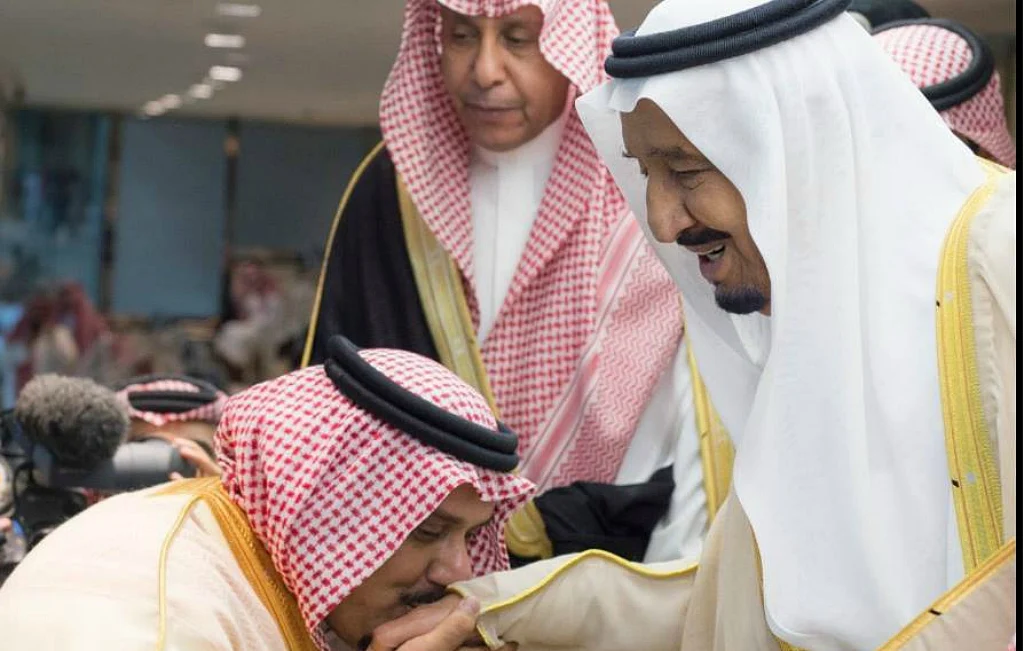All is not well within the house of Saud
Prince Salman’s elevation as the Saudi Crown Prince may lead to serious consequences both for Saudi Arabia as well as for the House of Saud, which has been in power since 1930s

The Saudi royal’s announcement on June 21 promoting Prince Mohammad bin Salman, son of incumbent King Salman, as the Crown Prince of the fundamentalist state of Saudi Arabia may give the impression of a smooth succession. But all is not well within the House of Saud that rules Saudi Arabia.
Prince Mohammad replaced his own cousin Mohammed bin Nayef, who was initially nominated Crown Prince last year when King Salman ascended the throne. The young 31-year-old Prince Salman was then appointed the Deputy Crown Prince, which placed him under Nayef, who is his cousin and much older than him.
Reports from Saudi Arabia suggest that Prince Salman’s transition to be the next King in line was smooth. Thirty one out of 34 members of the council of princes are reported to have approved the King’s decision to promote Mohammed. It included Prince Nayef, who pledged his allegiance to the young Prince which was highly publicised by the official Saudi TV network.
Nayef had no option but to go by the King’s command which is supreme in the Saudi style of governance. Saudi Arabia has an absolute monarchy which follows no constitution. The Quran is said to be its guiding book for running the state.
The King is not just the sole authority but his word is the law in Saudi system. But there are three major components of power in Saudi Arabia. First, the House of Saud which not only heads the monarchy but also established the Saudi Arabia as a country in the 1930s. Members of the royal Saudi family constitute the House of Saud at the apex of the power hierarchy in Saudi Arabia.
The second rung of Saudi power rests with the fundamentalist Wahabi Muslim clergy as King Saud along with founder of Wahabi Muslim sect Al Wahab had established the Saudi kingdom in the early 20th century. The Wahabi clergy as the final religious arbiter the of Saudi system of governance stands next in line to the House of Saud.
The third tier of the Saudi power structure comes from tribal chiefs whose consent is mandatory for the King to evolve consensus around major decisions the monarchy takes.
Prince Nayef has his fingers in every pie of the Saudi establishment. He has been serving as the interior minister for nearly past two decades. He is said to be the man who destroyed the al-Qaeda network in Saudi Arabia. Being interior minister and as the out-going Crown Prince, Nayef enjoys the status of a key member of the royal House of Saud.
Nayef has not only been heading the security apparatus of the Saudi government but he also had huge money at his command to keep the Saudi clergy as well as tribal chiefs happy in bargain of their continued allegiance to the Saudi monarchy.
Nayef is said to be a hard-line Islamist as compared to the young Prince Mohammed. It makes him closer to the fundamentalist Wahabi clergy as well as traditionalist tribal chiefs than Prince Mohammed, who is said to be modernist and enjoys greater proximity to the American establishment.
All may seem hunky-dory as of now with King Salman’s announcement to dump Prince Nayef and put his own son Prince Mohammed as the next King of the conservative oil-rich Kingdom. But Nayef is not going to take it lying down once the 81-year-old King Salam is gone.
There are already signs of rift within the House of Saud. It is for the first time that three members of the council of princes have refused to endorse the King’s decision to promote Salman. There is bound to be tussle between Prince Salman and Prince Nayef’s groups when the time of succession comes, Saudi insiders say.
Any rift within the House of Saud is bound to split the Saudi clergy as well as Saudi tribal chiefs along the two camps. The divide may split the Saudi society down the middle between modernists and conservatives. The modernists are being led By Prince Salman while Nayef is the leader of the conservative section of the Saudi society.
Saudi youths along with Saudi women have been demanding a more open Saudi society which Salman has been quietly supporting. But such a transformation will naturally curtail the clergy’s and traditional Saudi tribal chiefs’ powers. Both these groups are likely to go with Nayef in case of such an eventuality.
Any tussle within the House of Saud is bound to encourage ultra-Islamists like al-Qaeda and ISIS type of Jihadist elements within the Saudi society which will add to destabilisation of the otherwise peaceful Saudi Arabia. It will encourage Iran to meddle in Saudi affairs which may further compound the problem.
So, Prince Mohammed’s elevation as Crown Prince replacing cousin Prince Nayef may look smooth for now. But it has many imponderables which may lead to serious consequences both for Saudi Arabia as well as for the House of Saud which has been lording over the country since the 1930s.
Follow us on: Facebook, Twitter, Google News, Instagram
Join our official telegram channel (@nationalherald) and stay updated with the latest headlines
